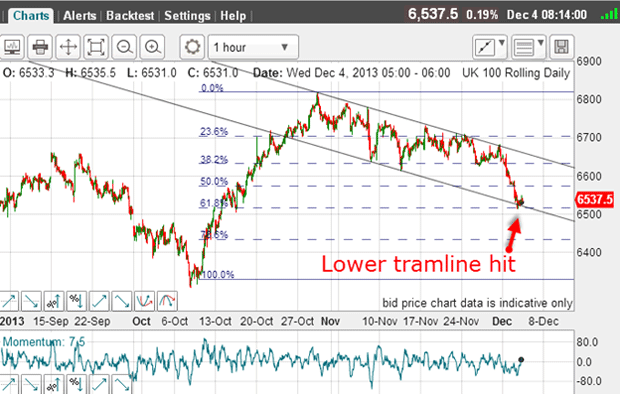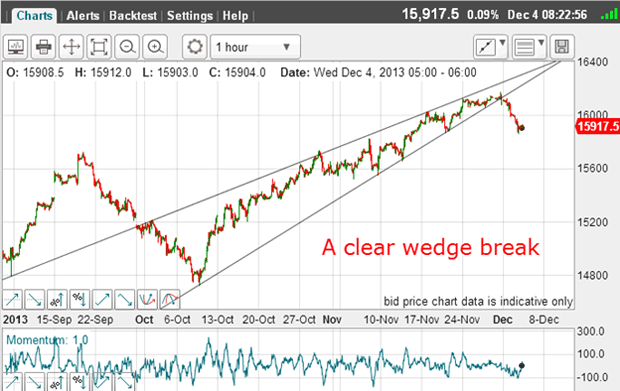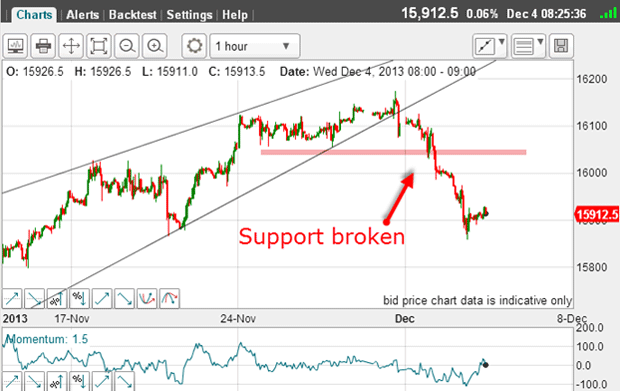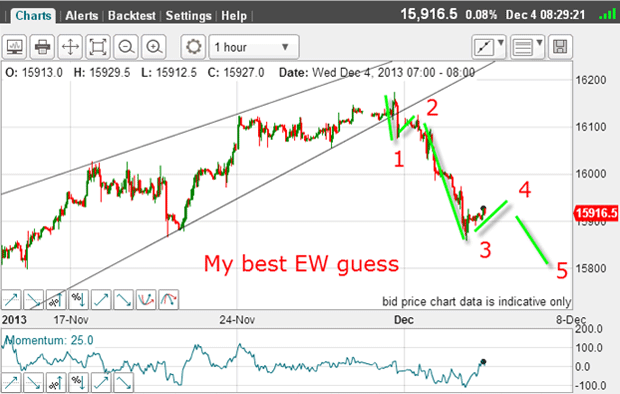Social mood is changing - are stocks in a decline?
Enthusiasm in stocks has started to wane, says John C Burford. Swing traders should get ready for a sharp downturn.
I will continue coverage of the stock markets today, because I believe we are at a historic point in terms of social mood. And if I am correct, this will show up in the stock market, because it is social mood or sentiment that drives the stock market.
In fact, the stock market is the most immediately responsive financial vehicle for highlighting changes in social mood. This is because a stock trade can take place at the click of a mouse after making the decision to trade. Are you feeling positive? Then click the 'buy' button. Feeling negative? Then click 'sell'.
Basically, the stock market is an instant thermometer of social mood.
MoneyWeek
Subscribe to MoneyWeek today and get your first six magazine issues absolutely FREE

Sign up to Money Morning
Don't miss the latest investment and personal finances news, market analysis, plus money-saving tips with our free twice-daily newsletter
Don't miss the latest investment and personal finances news, market analysis, plus money-saving tips with our free twice-daily newsletter
When the overall mood is positive and expansive, people buy things such as stocks, houses, consumer goods and so on. And they take on more debt, since they are feeling good about their future. A positive mood breeds bull markets.
But when the overall mood is negative, people shun stocks, they decide to stay put and buy fewer consumer goods, and generally retrench and shun debt, because they are fearful of the future. A negative mood breeds bear markets.
Is social mood changing?
Most people put the cart before the horse and believe a rising market creates a positive mood. In fact, the vast majority of pundits who write about markets follow this flawed line. It is pushed at us from all quarters.
But in reality, it is the internal mood of people that creates the markets. And when this positive mood is extreme, as it is today, the markets make their turns.
And when they do, most people will not recognise it, because they will refuse to believe anything has changed. The trend has been their very good friend, and who can abandon a friend when it has been so good to you?
With this in mind on Monday, I asked the question: are stocks poised for a decline? In other words, is the social mood changing?
The bigger picture

On Friday, it was trading at the upper tramline, and today it has fallen back to the lower tramline. That is a sharp decline. But it has arrived at the Fibonacci 62% level, where there should be support. The odds favour a bounce here, but will the buying be enough to rally the market back to the upper tramline for yet another test?
Remember, we have a potential double top at current levels, as I pointed out last week. We must always keep the bigger picture in mind when forecasting shorter-term moves.
Let's now take a look at the Dow:

This is the chart updated from Monday and shows a very large break of my wedge line. This is what I needed to see if Friday's high is a prime candidate for a major top.
Zooming in:

The pink support level which I showed on Monday has been decisively broken.
Naturally, this was an ideal place to short the market. In fact, the sharp decline has all the hallmarks of a third wave, since it is long and strong. So can I fit a tentative Elliott-wave count here?

Yes, I can. The Friday decline off the high to break my wedge line is wave 1 and the attempted kiss on this line is wave 2 and yesterday's decline is wave 3 (momentum readings are low). That means I expect a bounce in wave 4 leading to a new low in wave 5.
That would fit in with the picture in the FTSE, which appears to have found support this morning.
The markets make the news
If the public is starting to retrench, then the economic data will show it eventually. Remember, economic reports are lagging indicators. By the time you read gloom and doom stories, the markets are well into a declining phase and may be ready for a significant rally!
Trading off the news can be very dangerous.
This phenomenon destroys the universally-accepted mantra that the markets create sentiment. In fact, it is the markets that make the news and make opinions. This is starkly illustrated by the overwhelmingly bullish commentary on stocks today.
Pundits are falling over themselves recommending certain shares and sectors, as if they are oblivious to the dangers of a turning market. And these are exactly the kind of conditions that can provide the trader with exceptional opportunities!
Get the latest financial news, insights and expert analysis from our award-winning MoneyWeek team, to help you understand what really matters when it comes to your finances.
John is is a British-born lapsed PhD physicist, who previously worked for Nasa on the Mars exploration team. He is a former commodity trading advisor with the US Commodities Futures Trading Commission, and worked in a boutique futures house in California in the 1980s.
He was a partner in one of the first futures newsletter advisory services, based in Washington DC, specialising in pork bellies and currencies. John is primarily a chart-reading trader, having cut his trading teeth in the days before PCs.
As well as his work in the financial world, he has launched, run and sold several 'real' businesses producing 'real' products.

